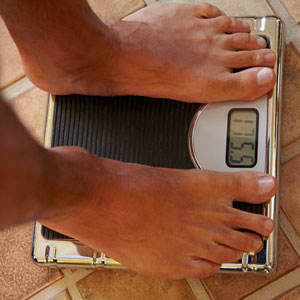
Eating out when you have diabetes
With planning and thoughtful choices, you can follow your meal plan for diabetes when you eat away from home, such as at a party or a restaurant. Here are some tips:
Plan ahead
- At restaurants, check for online menus that include nutrition information before you go, or ask for this information when you arrive. Most fast-food restaurants have information about the carbohydrate, calorie, sodium, and fat in their food.
- Buy a pocket guide of nutrition information for common foods at restaurants and take it with you.
- Know how much carbohydrate you should have at that meal.
- Before a party, eat some healthy food. You may be more likely to make healthy food choices when you’re with your friends if you don’t feel quite so hungry.
- Ask if you can bring food to share. You’ll have more control if you know there is a healthy choice you like and enjoy.
- Plan what you’ll do when people ask you to eat more. For example, you could take small servings, tell people you’ve had plenty of one food and want to try something else, or tell them that everything was good and you just can’t eat any more.
Think about your portions
- At restaurants, ask for a half-size or lunch portion. At parties, use the smallest plate available.
- Avoid all-you-can-eat menus and buffets. Unlimited refills of soup or pasta may sound like a good value, but they can make it easier to overeat. At parties, avoiding unlimited food might be a lot harder. Focus on talking with others at parties, not on eating the food. Find and join groups of people who are not near the food table.
- Appetizers can add a lot of fat and calories (and carbohydrate, depending on the item). Unless healthy choices are available, you may want to skip appetizers, especially if weight loss is a goal for you.
- At fast-food restaurants, choose the smallest-size meal option instead of “super-sizing.”
- When at restaurants, try putting half of your meal in a to-go box. Ask your server to bring the box with your meal, so that you can split the meal before you even take the first bite.
- Try splitting a meal with someone else.
Make your meals lower in saturated and trans fat
- Foods that are grilled, baked, or steamed tend to be lower in fat than foods that are fried. Limit foods that are breaded or that come with cream sauce or gravy.
- Control how much fat you use by putting butter, sour cream, gravy, and sauces on the side of the food, rather than on top.
- Instead of creamy dressings, pick reduced-fat or oil-and-vinegar salad dressings.
- Choose hamburgers and sandwiches without the high-fat extras, such as cheese and bacon.
- Avoid cream sauces, such as Alfredo, and gravies.
Add fruits, vegetables, and whole grains
- Add vegetables to pizzas and sandwiches.
- Choose vegetables, a plain baked potato, a side salad, or fruit instead of fried foods like fries.
- Try vegetarian foods. Indian, Thai, and Japanese foods often have a wide variety of vegetarian choices.
- Pick brown rice, whole-grain pastas, breads, and tortillas.
Choose your beverages carefully
- Opt for water instead of sugar-sweetened soft drinks. If you don’t like plain water, try other sugar-free or low-calorie beverages, such as fruit-flavored sparkling water or unsweetened iced tea.
- Remember that the calories in alcoholic drinks can add up. A large cocktail, such as a margarita, can have as many calories as the meal.
Current as of: May 23, 2016
Author: Healthwise Staff
Medical Review: E. Gregory Thompson, MD – Internal Medicine & Rhonda O’Brien, MS, RD, CDE – Certified Diabetes Educator
This information does not replace the advice of a doctor. Healthwise, Incorporated, disclaims any warranty or liability for your use of this information. Your use of this information means that you agree to the Terms of Use. Learn how we develop our content.
To learn more about Healthwise, visit Healthwise.org.
© 1995-2016 Healthwise, Incorporated. Healthwise, Healthwise for every health decision, and the Healthwise logo are trademarks of Healthwise, Incorporated.
YOU MAY ALSO BE
INTERESTED IN:

Do your diabetes homework
When you were in school, homework might have seemed like a chore, but it was…

Living healthier with diabetes
Diabetes is a rapidly growing health problem.

Order for Two! Healthier Eating for Pregnant, Diabetic Women
When you’re pregnant, your food choices can pack double the punch. In fact, maintaining a…





